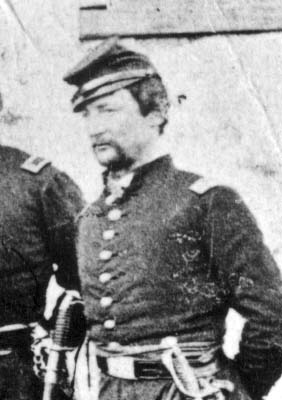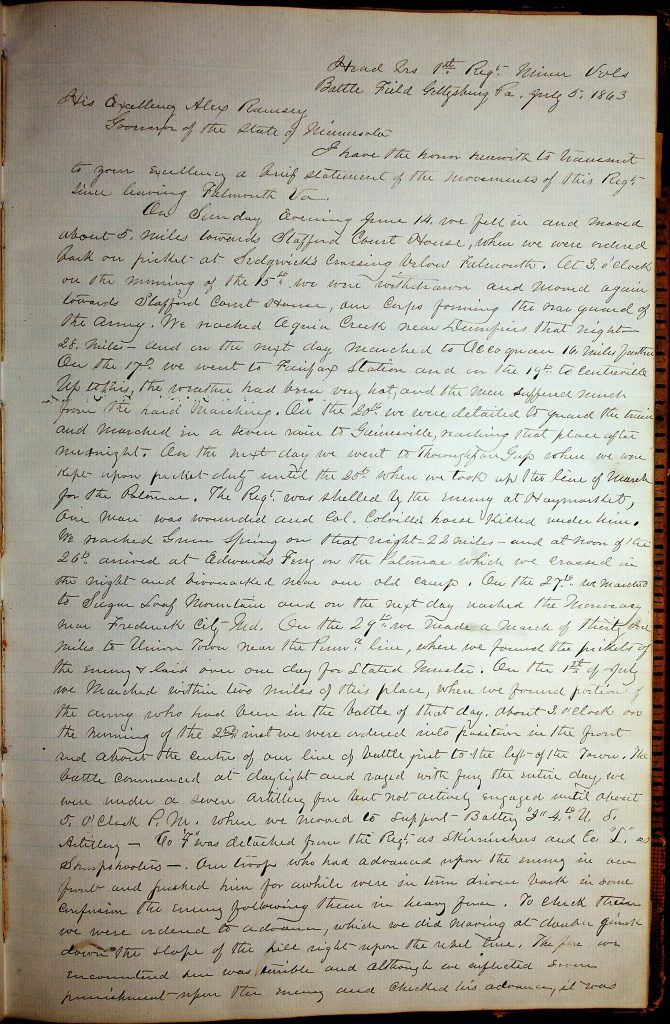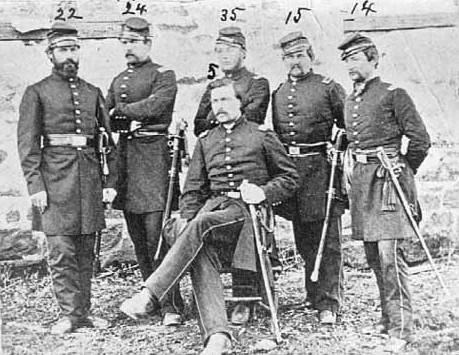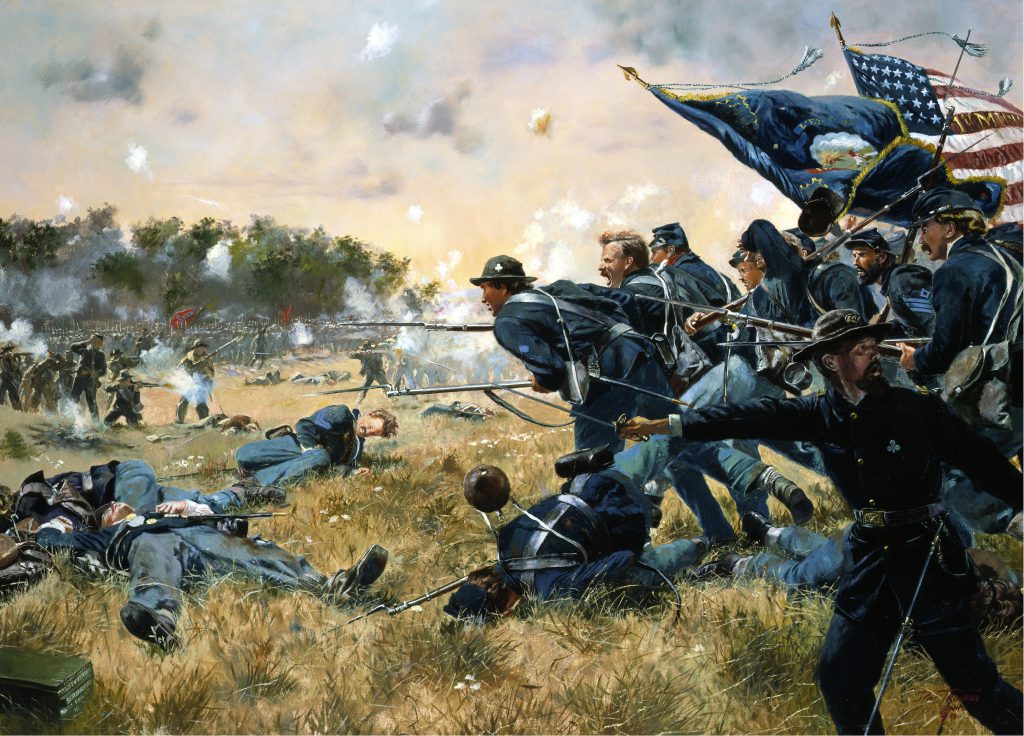Beyond the Charge: Captain H.C. Coates and the 1st Minnesota After Gettysburg
Beyond the Charge: Captain H.C. Coates and the 1st Minnesota After Gettysburg
The story of the 1st Minnesota Infantry is usually told in a single moment—the desperate charge on July 2, 1863, at Gettysburg, when the regiment was ordered to plug a critical gap in the Union line. In less than fifteen minutes, they lost more than 80% of their number. It remains one of the most staggering sacrifices in American military history.

But Gettysburg was not the end of their story.
In the shadow of that moment, the survivors of the 1st Minnesota reformed, regrouped, and continued to serve through the final, grueling years of the Civil War. Under new leadership and with depleted ranks, they fought in many more battles, marched in the cold, endured more disease and loss—and saw the war through to its end. Among those who rose in responsibility and shaped the regiment’s final chapter was Captain H.C. Coates, a quiet figure who stepped into command at a moment of chaos and helped steer the regiment forward when most of its leaders had fallen.
Thanks to recently digitized records from both the Minnesota State Archives and the National Archives, it’s now possible to piece together the 1st Minnesota’s journey after Gettysburg in far greater detail than ever before. (to see the full digitized collection,
The Letter from the Field
Captain Coates first stepped into the spotlight not with a speech, but with a letter.
On July 5, 1863, just days after the fighting at Gettysburg, Coates sat down on the battlefield and wrote to

Minnesota Governor Alexander Ramsey. The letter, preserved in the state archives, offers one of the clearest firsthand accounts of what the regiment experienced over the previous weeks—and what they had lost.
“To check them we were ordered to advance… although we inflicted severe punishment upon the enemy… it was with the loss in killed and wounded of nearly two-thirds of our men who were engaged.”
Nearly all the regiment’s senior officers were among the wounded or dead. Colonel Colvill was shot through the shoulder and foot. Lt. Col. Adams was hit in the chest and leg. Major Downie and Adjutant Peller were wounded. Captain Coates, almost by default, found himself at the head of a regiment that had just lost 222 men out of 330 engaged.
His tone is measured but personal—reporting casualties in one line, then recounting acts of courage in the next. He takes time to mention Corporal Henry D. O’Brien, who, even after being wounded, seized the flag and charged forward into enemy fire. He notes the loss of Captain Messick, who was killed while leading the regiment during Pickett’s Charge on July 3.
Coates ends the letter not in triumph, but with sorrow and pride:
“Our loss of so many brave here is heartbreaking and will carry mourning into all part of the State, but they have fallen in a holy cause and their memory will not soon perish.”
This moment—when the smoke of battle had barely cleared—was the beginning of a new chapter for the 1st Minnesota.
Reorganizing the 1st Minnesota
The months following Gettysburg were about survival and rebuilding.
After being pulled back from front-line duty, the 1st Minnesota remained attached to the 2nd Division, 2nd Corps of the Army of the Potomac. The once-proud regiment was now a fraction of its former self. Morning Reports, kept by the company clerks and officers, document this transition. These daily records—now digitized and preserved on the Research Arsenal—track sickness, desertions, and returns from hospital (1864-1865)
In some companies, just a handful of men were fit for duty. These ledgers offer more than numbers—they show the uneven, human process of restoring a unit that had given everything in a single moment and was still expected to keep fighting.
Captain Coates: A Quiet Steady Hand

H.C. Coates wasn’t a politician or a battlefield celebrity. He left behind no sweeping memoirs, no heroic portraits. What we know of him comes from the pages of official letters and order books.
In those records, we see a man who led by presence and by persistence. His signature appears again and again in regimental communications, court-martial proceedings, and movement reports. He didn’t reshape the army or deliver rousing battlefield addresses—but he made sure the 1st Minnesota remained a functional, reliable fighting force.
He wrote the governor. He signed reports. He, along with the other company officers, kept the wheels turning.
The war didn’t stop for anyone—not even a regiment that had sacrificed most of its strength. Under Coates’ command, the 1st Minnesota returned to campaigning with the Army of the Potomac until Lt. Col. Mark W. Downie took command of the 1st Minnesota Infantry from late 1863 until its mustering out in May 1864.
The Hidden Side of Army Life
Military records after Gettysburg show a different kind of war—less famous, but just as grueling.
In August 1863, an order book entry records a general court-martial held for soldiers across the 2nd Division. Among them is a man from the 1st Minnesota: Wagoner Calvin W. Treadway, Company C, who was found guilty of cruelty to animals and fined $5. The military justice system was still active, and discipline remained strict—even among battle-tested veterans.
Other soldiers in the unit faced punishments for desertion, theft, and disorder. One soldier, convicted of quitting his post to plunder, was sentenced to hard labor and loss of all pay. Another was ordered to carry a 30-pound log for five hours a day for two weeks. These were not just dramatic tales of heroism; they were soldiers navigating fatigue, temptation, boredom, and war’s moral grind.
These court-martial records, mundane on the surface, reveal how fragile army discipline could be—and how essential leadership like Coates’ was in holding it together just after their losses at Gettysburg.
The Official end of the 1st Minnesota?
As the original enlistment terms of the 1st Minnesota Infantry expired in the spring of 1864, the regiment was officially mustered out of service on May 5, 1864, at Fort Snelling.
After nearly three years of grueling combat, including their legendary stand at Gettysburg, many of the surviving men returned home. Yet, for some veterans, the fight was not finished. Those who chose to reenlist, along with fresh recruits, formed a new unit: the 1st Minnesota Infantry Battalion. Though smaller in size, this battalion carried forward the honored name and traditions of the original regiment, continuing to serve with distinction during the final year of the war, including action in the Overland Campaign and the Siege of Petersburg. Their service ensured that the legacy of the 1st Minnesota did not end at Gettysburg or with the mustering out of the original volunteers, but endured through the war’s end.
Into 1864: The Overland Campaign
In 1864, the war entered one of its most intense phases—the Overland Campaign. Grant had taken command of all Union armies and was determined to drive toward Richmond. The 1st Minnesota Battalion, though understrength, remained part of the advance.
They fought in the Wilderness, Spotsylvania, and Cold Harbor. These were not sweeping victories, but brutal slogs, where tens of thousands died in a matter of weeks. Many of the records digitized by the Research Arsenal from Record Group 94 include this “reorganized” service for the 1st MN. The Descriptive and Casualty Books from this period list men who fell not in famous charges, but in nameless ravines, trenches, or from disease in camp.
Some entries are only a line or two—“Killed, Cold Harbor,” or “Missing, presumed dead.” Others note transfers to hospitals, or men reduced to half rations. One can trace how certain companies dwindled, how others were replenished, how names changed—but the regiment stayed.
Petersburg and the Final Winter
By the summer of 1864, the Union army had surrounded Petersburg, just south of Richmond. The siege would last nearly a year.
The 1st Minnesota was there, in the trenches, holding lines, rotating to the rear, and returning to the front. The Regimental Morning Reports during this time show exhaustion: men unfit for duty, weapons unserviceable, uniforms needing replacement.
Yet they stayed.
Their ranks were replenished with new Minnesotans—farm boys, clerks, sons of immigrants—who had likely grown up hearing about Gettysburg. They now served under its survivors. Captain Coates and his officers trained and shaped this new generation while still carrying the weight of 1863.
A Quiet Return
When the war ended in the spring of 1865, the 1st Minnesota had been in the field for four long years.
The men who had survived Gettysburg had done what the country asked: they kept going. They didn’t fight to be remembered. They fought because they were still needed.
Captain Coates faded into history with little fanfare. His wartime correspondence survive, but he did not build a legacy on them. Yet his actions—steady, thoughtful, persistent—were exactly what the regiment needed. He helped carry the 1st Minnesota from tragedy into its final duty.
Conclusion: Remembering the Whole Story

It’s right that the 1st Minnesota is remembered for what happened at Gettysburg. But their service did not end there. The charge was only a single, if defining, moment in a much longer story of sacrifice, service, and survival.
Thanks to newly digitized sources—including the Captain Coates Gettysburg letter, Morning Reports, Descriptive Books, and Order Books—it’s now possible to see that story in full.
These are not the tales found in battlefield monuments or Hollywood scripts. They’re found in daily reports, in injury logs, in handwritten orders about forage details and sentry rotations. They’re found in quiet acts of leadership and loyalty, carried out by men who knew their duty didn’t end when the charge was over.
Captain H.C. Coates’ words still echo more than 150 years later:
“They have fallen in a holy cause, and their memory will not soon perish.”
It hasn’t.
**Note: To see the digitized records of the 1st MN Infantry from the Minnesota State Archives, and the 1st MN Battalion from the National Archives (RG94), filter by unit on the Research Arsenal database and discover the amazing detailed service of these men!
Some of the records of the 1st MN have been damaged due to poor care before it came into the possession of the state or federal government. Our own “Angry Archivist” goes off on a rant about the irreparable damage this does to these priceless documents. Check that blog out HERE!

